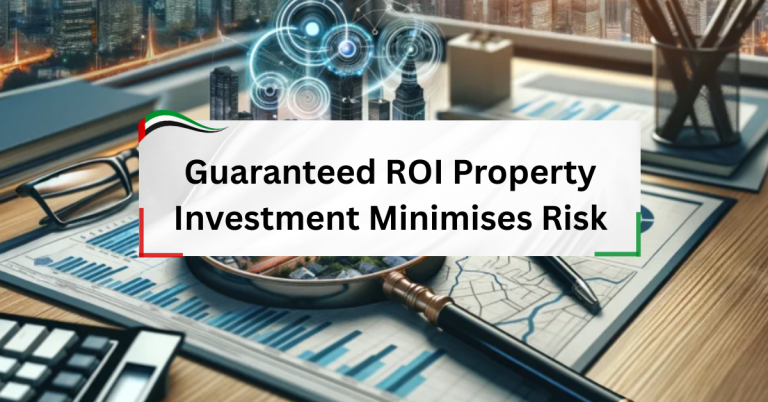Is the Guaranteed ROI Better Than the Expected ROI?
There are fancy words like Guaranteed ROI and Expected ROI that confuse both novice and expert investors whenever it comes to investment evaluation. At first glance, a guaranteed return might seem appealing. After all, who wouldn’t want certainty in the uncertain world of investing? However, before making any hasty conclusions, it might be interesting to explore what exactly makes the two different and in what context one might be better than another. Our main focus will be on Is the guaranteed ROI better than the expected ROI.
Very Simple Explanation of ROI
Simply put, ROI stands for Return on Investment. Although technically, it is the expected profit or revenue over the entire cost of the investment. It is applied across sectors, such as finance, business, and marketing, to suggest how efficient or good an investment is. Is the Guaranteed ROI Better Than the Expected ROI? is a very important question for investors.
For example:
If you invest $1,000 and make $1,200, your ROI is:
ROI = ((1200 – 1000) / 1000) × 100 = 20%
But how this ROI is predicted or guaranteed makes a big difference. It will help us to understand Is the Guaranteed ROI Better Than the Expected ROI.
What does Guaranteed ROI mean?
Is the Guaranteed ROI Better Than the Expected ROI? Here is the answer. Guaranteed ROI provides you with a promise of obtaining a set amount of money for return, with no regard to market conditions or performance outcomes. Such funds are usually found in very-low-risk investments like:
- Fixed deposits
- Government debt securities
- Certain insurance plans
- Certificates of deposit (CDs)
Guaranteed ROI Good Pros:
- Predictable and stable returns.
- Low chance of financial risk.
- Preferred choice among conservative investors.
Guaranteed ROI Bad Cons:
- Typically, lower returns than the high-risk investments.
- Limited scope of growth.
- Over the years, inflation may eat up its effective value.
Thus, guaranteed ROI compromises on the profitability side for the sake of safety.
What is Expected ROI?
You should know about the expected ROI before knowing if the Guaranteed ROI Better Than the Expected ROI. Expected ROI means the estimated returns based on market studies, historical performance, and forecasts. This is common in:
- Stock Market
- Real estate
- Start-up and Business Ventures
- Marketing campaigns
Pros of Expected ROI:
- The possibility of higher gains.
- Flexibility in investment choices.
- A chance to beat inflation.
Cons of Expected ROI:
- Higher risk and uncertainty.
- Actual returns may vary markedly from expected returns.
- Requires market knowledge and analysis.
In short, expected ROI emphasises opportunity rather than certainty.
Guaranteed ROI vs. Expected ROI: Is the Guaranteed ROI Better Than the Expected ROI
| Factor | Guaranteed ROI | Expected ROI |
| Risk Level | Low | Medium to High |
| Return Potential | Low to Moderate | Moderate to High |
| Predictability | High | Low to Moderate |
| Best For | Conservative investors | Growth-focused investors |
| Examples | Bonds, CDs, annuities | Stocks, startups, marketing |
Is the Guaranteed ROI Better Than the Expected ROI
“Well, it entirely depends on what your financial objectives are, what your capital mandate is, and what your time horizon is.”
A guaranteed ROI becomes the more dangerous option if you are capital preservation-minded and cannot tolerate losses.
On the other hand, if you are someone who wishes to grow wealth and can tolerate some ups and downs, an expected ROI could yield better returns in the long run. Before any long-term investment and short term investment, you have to collect knowledge Is the Guaranteed ROI Better Than Expected ROI.
Example:
Imagine you have $10,000 to invest for 5 years.
- Guaranteed ROI at 3% per year → After 5 years: ~$11,592
- Expected ROI at an average of 8% per year → Could be ~$14,693 (but could also be lower if markets underperform)
The potential difference is clear, but so is the risk.
The Equal Measure
Most smart investors will, therefore, mix the two approaches. Invest a part of your portfolio in guaranteed ROI investments for stability, and use the other part for expected ROI investments that grow your investment portfolio into a bright future. This way, you will both enjoy the advantage of having both benefits while reducing the risk.
A popular approach is the 70/30 rule:
- 70% in safe, guaranteed-return instruments
- 30% in higher-risk, growth-focused assets
Conclusion
It’s all personal. It comes down to one’s financial status. Neither guaranteed ROI nor expected ROI can be “better” than the other. Guaranteed returns come with peace of mind, while expected returns might fare much better. The safest and probably the most successful way to go is to try to follow a combination of both in line with your risk appetite and long-term goals. This information helps you to start your business. Is the Guaranteed ROI Better Than the Expected ROI?
For the majority of investors, it is best to mix the two and then adjust the proportion to fit their age, goals, and appetite for risk. Remember, investing is not a search for the ‘perfect’ investment, but a quest for designing a portfolio that works with you.
FAQs About Guaranteed ROI

1- Safe Investment Options in Dubai with Guaranteed ROI (2025)–
2- Guaranteed ROI Investment Property in JVC Dubai Fully Rented









